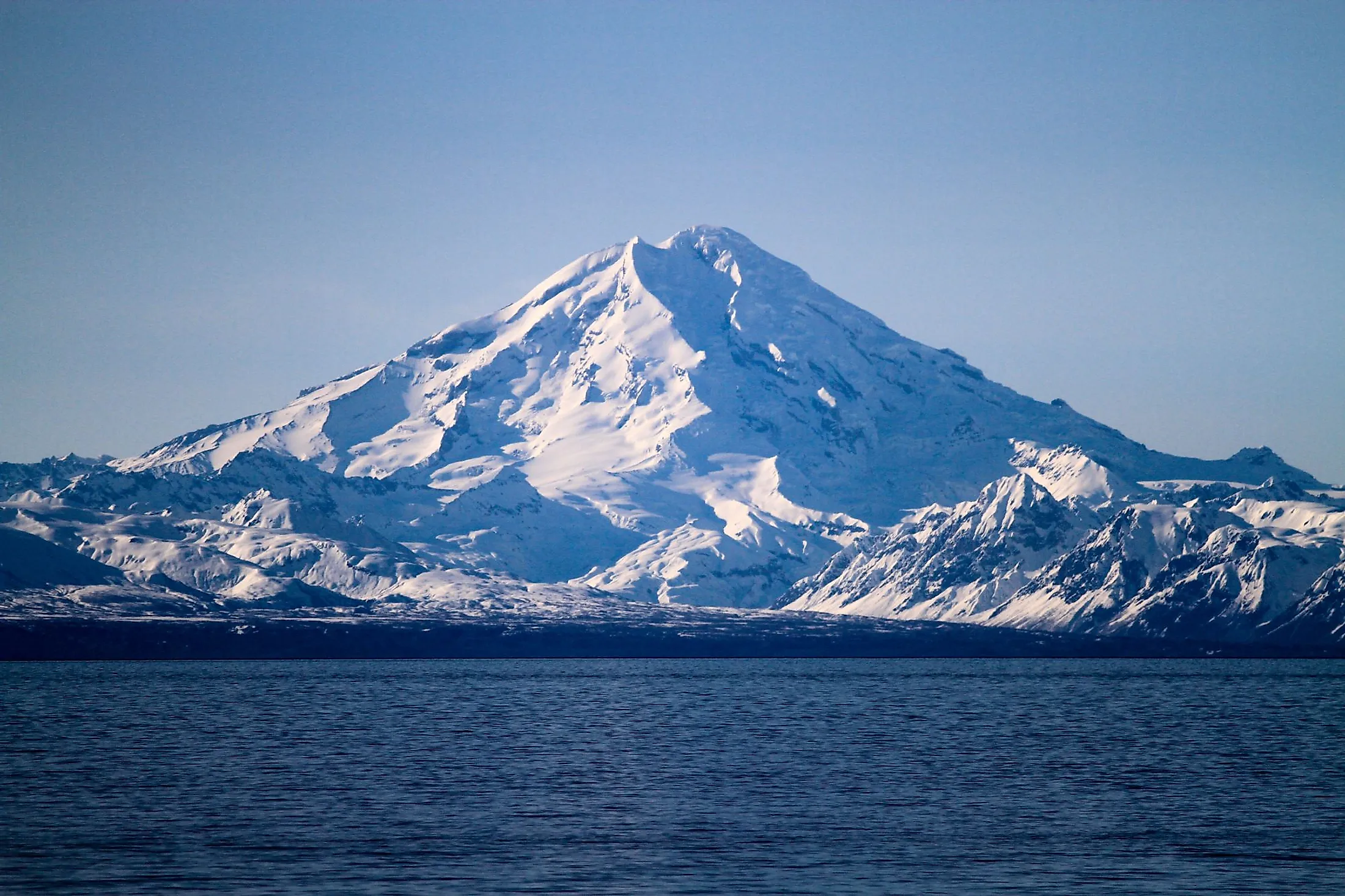
Redoubt Volcano, Alaska
Having many unique names, such as Burnt Mountain, Mirando, Yjakushatsch, etc., Redoubt Volcano is a large volcanic mountain in the United States. This stratovolcano has been active for many millennia, with four confirmed eruptions in the past 150 years alone. Adding mudslides to the immense height of this volcano, these eruptions were catastrophic events, with some sending smoke to a height of over 10,000 feet and even damaging aircraft in the vicinity. Redoubt Volcano is considered the country's fourth most hazardous volcano and one of Alaska's most dangerous volcanoes. With the volcano still as active as ever, who knows when it can erupt again?
Geography Of Redoubt Volcano
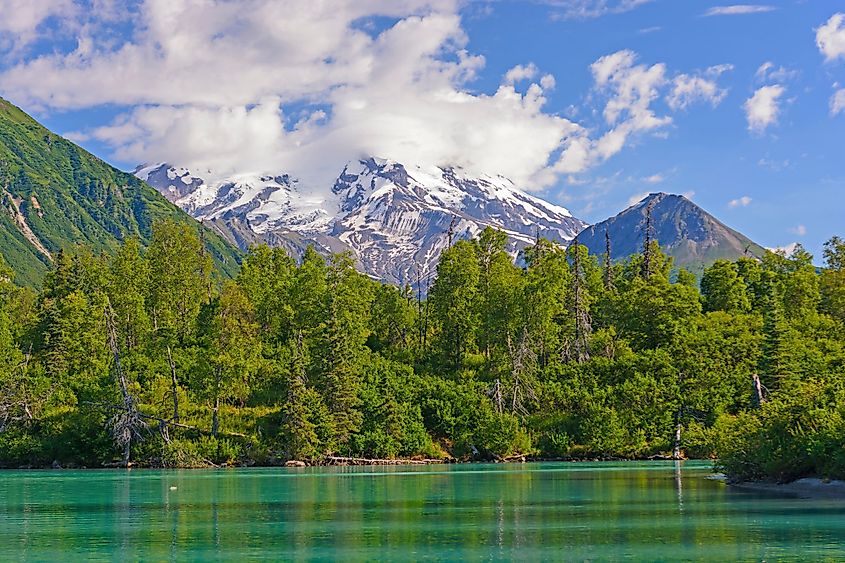
Standing at the height of more than 3,108 m, Redoubt Volcano is located in the US State of Alaska, about 180 km southwest of Anchorage. It is the highest volcanic mountain within the Aleutian Range which is a major mountain range known for having an abundance of volcanoes in Southwest Alaska. Parallelly, Redoubt is also at the head of the Chigmit Mountains subrange, thanks to which it sits within the Lake Clark National Park and Preserve as a National Natural Landmark. That being said, when it comes to Redoubt Volcano, the location and geography are not exactly as they seem.
This is because apart from the 6.0 km diameter above ground, a major feature for the creation of Redoubt Volcano is its position along the North American and Pacific tectonic plates. Due to this, the melt created along these plates is what gradually hardens to form the volcano as well as the magma within it. Thus, in terms of the geographical surroundings, Redoubt is located along the continental crust above a granite batholith (an immensely large mass of igneous rock).
Eruption History Of Redoubt Volcano
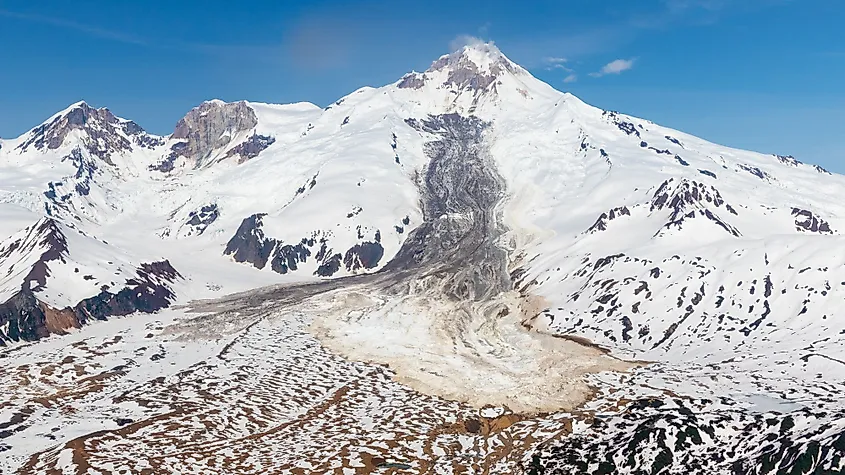
According to scientists, Mount Redoubt would have been built above the Aleutian subduction zone over 800,000 years. With estimates suggesting that its early growth began with dacitic eruptions and lava domes, these gradually formed a conical structure that started to build the volcano. 500,000 years since this began, the eruptions began to fluctuate, becoming less and more silicic, gradually developing the massive cone we know as Mount Redoubt. That being said, as this was before its discovery, the number of eruptions that may have taken place at this time is neither recorded nor known. It was only in 1778 that Captain James Cook spotted Redoubt Volcano and according to his reports, it was “emitting a white smoke but no fire.” Since then, there have supposedly been four confirmed eruptions in 1902, 1966, 1989, and 2009. Additional reports also included an eruption back in 1881; although there is minimal documentation of this event and with only a few claims from native hunters, this eruption is not confirmed. So, let’s go over the documented and confirmed eruptions of Mount Redoubt in the 250-odd years since its discovery.
The first recorded eruption took place in 1902 and, unlike the following ones, was very abrupt. This caught the nearby population by surprise, and the eruption supposedly created a rumbling boom for many miles while also spewing ash for up to 150 miles into a stretch of land known as the Cook Inlet. While it is uncertain how much damage this eruption actually caused, the event attracted large amounts of attention to Redoubt Volcano and the danger it presents. About half a century after this, the next eruption took place in 1966 and is often described as being a highly “explosive” event. This is primarily due to reports suggesting that the eruption created a similar noise and threw a plume of ash as the first while also being the cause of melting glaciers and immense flooding in the mountain range. Thankfully, as nearby areas weren’t population dense, the damage was minimal.
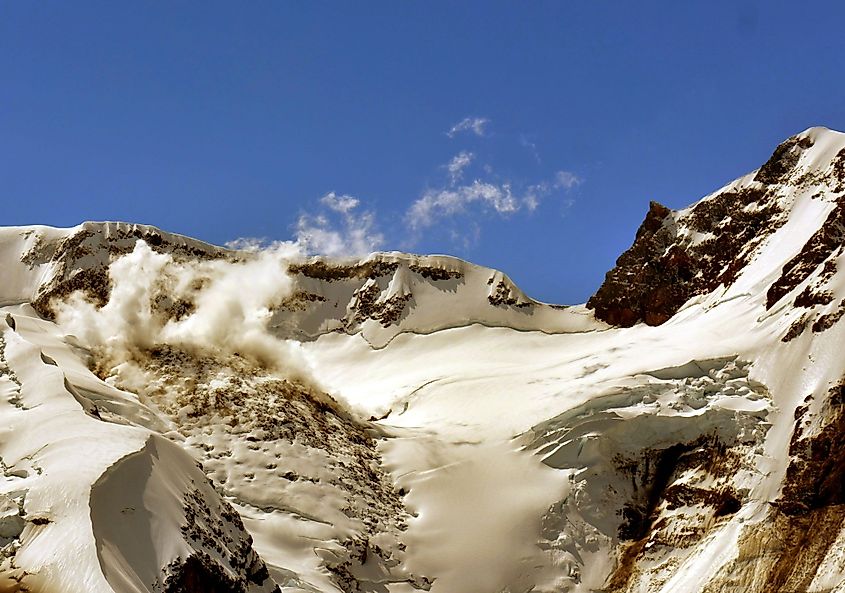
Following this, Redoubt Volcano lay more or less dormant until 1989, at which time a six-month-long eruption took place. Initiated by a sudden melting of snow leading to mudslides into the nearby Cook Inlet, this eruption started off slow but turned into a catastrophe. As mudslides increased, scientists in the region began testing devices to learn more about it, but a few months into 1990 and Redoubt Volcano blasted! While the eruption itself may not have been the worst, at the time, a Boeing 747-400 jumbo airliner came into contact with the plume of ash, which led to all four of its engines failing. Parallelly, it was followed by 23 ash-filled mini-eruptions, which led to the blockage of the Drift River Oil Terminal and increased the overall expense. This brought the cost of the eruption to a whopping $160 million, making it one of the costliest volcanic eruptions in America’s history.
Since this event, Redoubt Volcano has only erupted one more time in 2009, but thankfully this time, people were more prepared. Initially triggered by a large earthquake in the region and a minor ash explosion, Redoubt Volcano was put on high alert for an imminent eruption by scientists at the Alaska Volcano Observatory(AVO). Thankfully, while being prepared, the eruption that took place mainly consisted of water vapor and gas, with no major event happening. Since then, scientists from the AVO have set up various systems to monitor Mount Redoubt, such as seismometers, a webcam, etc., which allow them to monitor the unstable stratovolcano and surrounding factors like melting ice, mudslides, etc.
Climate Of Redoubt Volcano
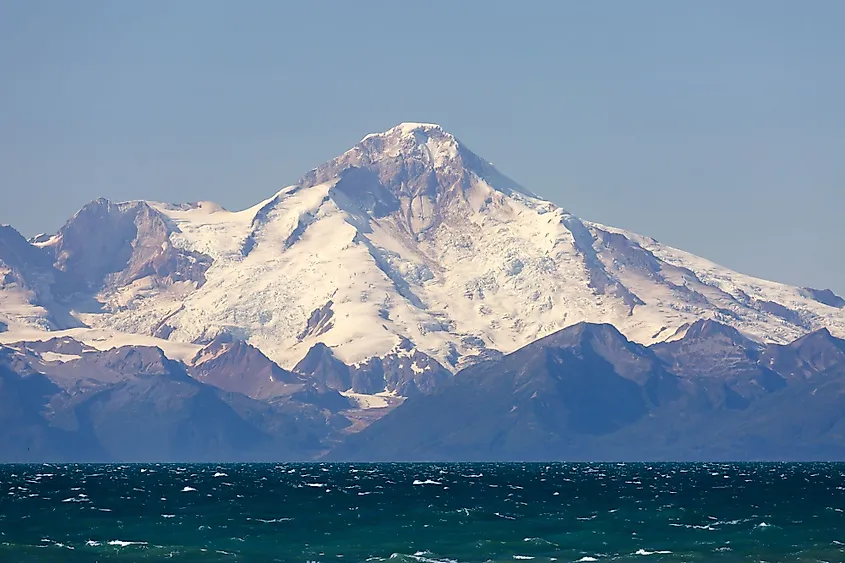
Due to its immense height, the exact temperature from the base of Redoubt Volcano to the summit fluctuates immensely. Moreover, considering that it currently has an ice-filled crater and is heavily glaciated, things can get quite extremely cold at the summit. Thankfully, we can instead consider the nearby area surrounding Redoubt Volcano for the climate. Being in Alaska, the climate tends to be on the much colder side, and Redoubt is located within a Subarctic climate zone, according to the Koppen Classification. Thus, it is no surprise that the region faces sub-zero temperatures throughout the year, with the warmest months being July and August. Apart from that, the region can get extremely cold in winter, and average temperatures around January have been recorded below -4°F. Thankfully, if you do find yourself here in winter, the magma might be able to help heat things up a bit!
Geology Of Redoubt Volcano
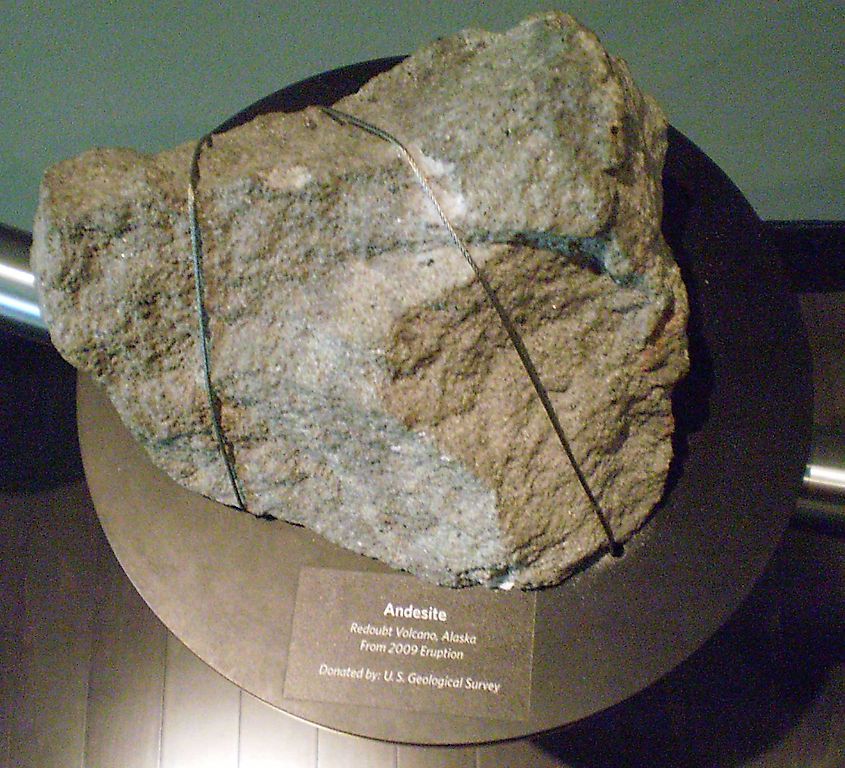
Being a volcano, Redoubt is home to some amazing geological formations and rock types that have formed over a long time! According to scientists, the volcano is the product of 900,000-odd years of dacitic explosive eruptions, which over the years, became less and more silicic. Due to this fluctuation, when the eruptions were less silicic, the eruptions would create basalt and basaltic andesite lava, while when vice versa, silicic andesite ashfalls would be formed.
As this process continued, it produced a mix of andesite, basalt, and dacite in the eruptions that we see today, with silicic andesite being the primary component of the lava. As for the mountain itself, being located on the Aleutian batholith, the volcano rests on a massive formation of Mesozoic granite and is composed of pyroclastic deposits and lava flows from many millennia. Thus, it has been classified as a stratovolcano which essentially refers to a conical volcano built by many layers of hardened lava.
Interesting Facts About Redoubt Volcano
While it is still an active volcano, Redoubt Volcano has been heavily weathered by glaciers and currently has an ice-filled summit crater. In June 2015, a large amount of meltwater was observed by the Alaska Volcano Observatory, which indicated an outburst of flood from the Mount Redoubt crater. Thankfully, as of now, there have not been any Alert Level changes for Redoubt related to this event. One of the greatest risks posed by Redoubt Volcano is the blockage of the nearby Drift River Oil Terminal, which can be hit by lahars (a type of mudslide) and ash from previous eruptions. With new equipment and surveillance systems set up, scientists are now actively tracking seismic activity, gas emissions, and any major changes at Mount Redoubt.











